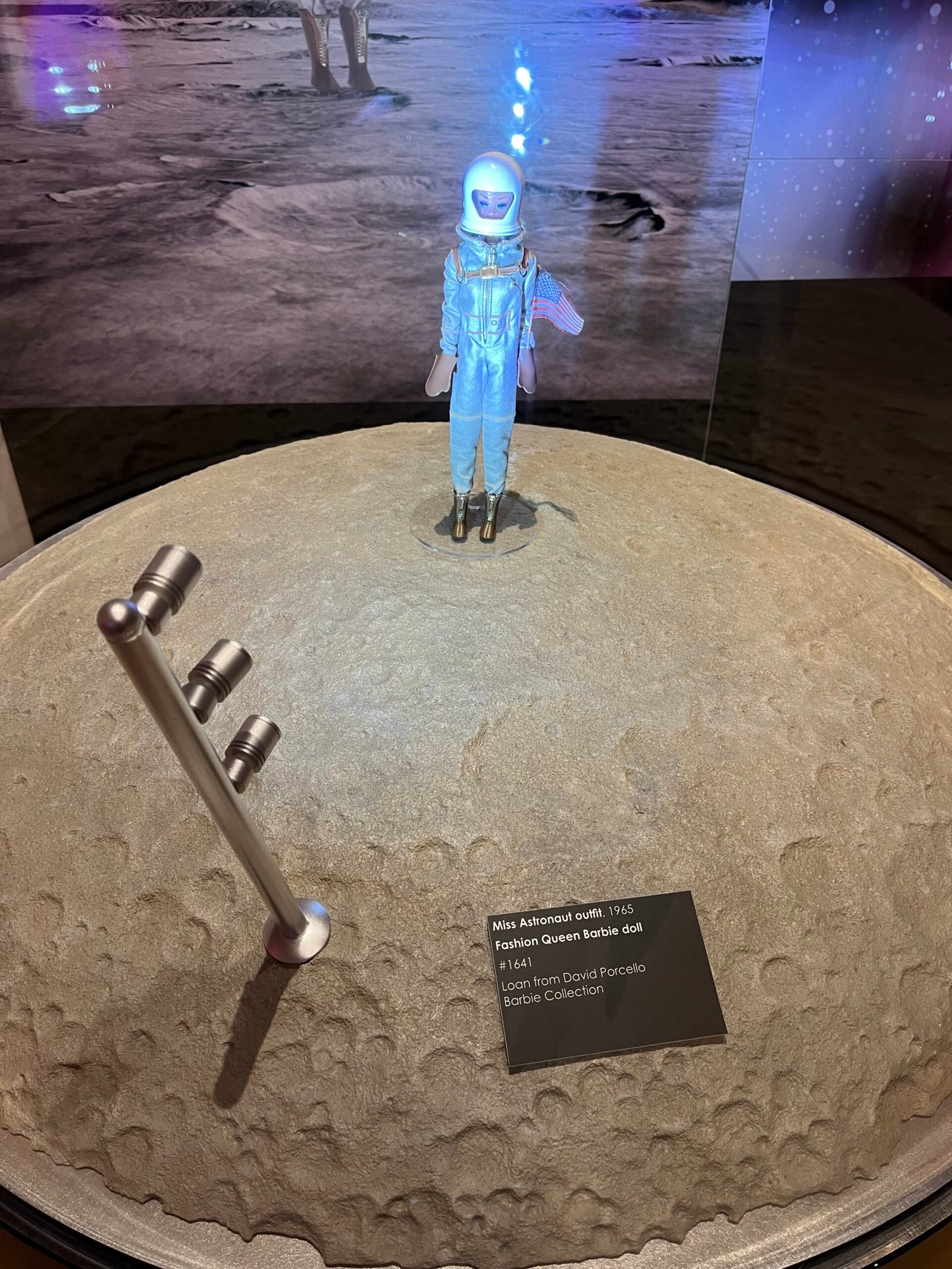You or someone you know probably has a Barbie as a kid. Then you grow up, you grow out of it, a Barbie exhibit crops up, and the first thing you think is, “I’m too old for this” “I HAVE to go!” The reasons are myriad: nostalgia, the color overdose, the ability to step back into history and visualize what Barbie looked like before you were even a thought.
The Barbie exhibit in the Museum of Arts and Design delivers on all fronts. If you’re in New York City until March 16, 2025, be sure to visit! During my visit, I went in chronological order, starting with 1959: the year Barbie debuted. Unlike the children the dolls were targeted at, the fashion designers were not playing. They pulled out all the stops, using quality fabric (think: cotton, linen) for surprisingly mature outfits, including a wedding dress and lacy negligee (not pictured).


By design, Barbie’s original apartment didn’t feature a kitchen. Instead, you’ll notice college pennants on the wall – after World War II, women’s access to higher education expanded significantly.

It wasn’t long before the very talented Barbie entered a range of professions:





Unless I missed something, the exhibit features every decade since the ’50s except the early 2000s. Let me know if you find evidence otherwise 🕵️♀️
Advertisements (TV, print, digital) show that with each passing decade, the way people speak and dress leans more casual. Around the 1970s, more focus started to be placed on Barbie’s capabilities (“Look at how she can move! And all the places she can go!”), not only on her looks. Based on these commercials from different eras, would you agree?
💡 Did you know? The full name of Barbie, who apparently hails from Wisconsin, is Barbara Millicent Roberts.
Wisconsin Historical Society
Fast forward 60 years after Barbie’s debut and we have BMR1959: a doll line commemorating Barbie’s history. I imagined something ’50s inspired, but it leans more contemporary and urban. It also represents more skin tones, body shapes, and hairstyles.

From start to finish, apparently hundreds of people work on a Barbie. While there’s more progress to make, I’m glad inclusivity is baked into the process. The end result? The pure joy when you see yourself in Barbie (or Ken)!


💡 Pro-tip: When visiting museums, start on the highest floor and work your way down. As you get tired, at least gravity will be on your side!
Even if you’re not big on Barbie, you’re guaranteed solid history lessons, both by the placards and by stories of other museum-goers. Fashion lovers will especially rejoice. Here are some outfits I’d more than happily add to my own wardrobe!





From doll to icon, Barbie adapts to the times and is always ready to take on the world – in style!








Leave a Reply